Satin fabric
Satin fabric
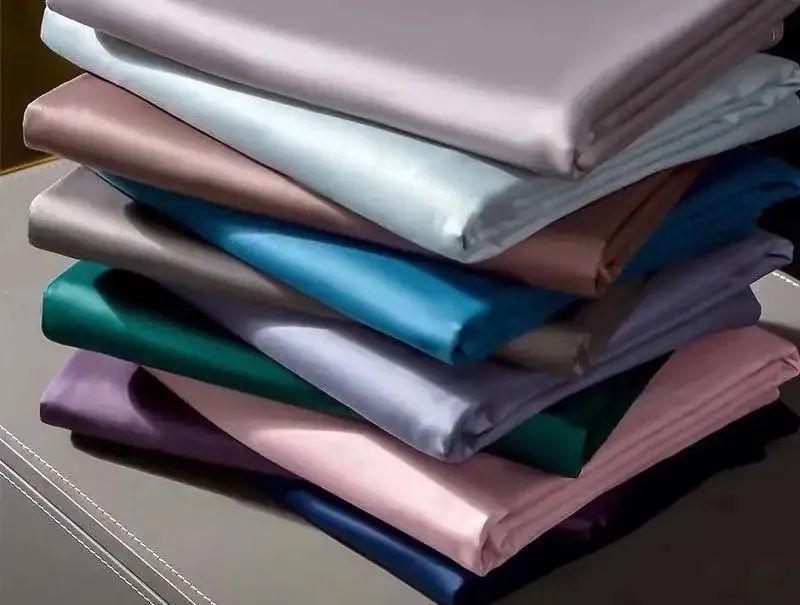
1. Basic concepts
Satin fabric, also known as satin fabric, is A fabric with a relatively complex weaving process. It is a combed fabric with a density of 173*124CM, with warp and weft yarns interlaced at least once every three yarns. It was named after it was given as a “tribute” to the emperor due to its good quality characteristics.
2. Production process
(1) In the weaving process, the warp and weft are interlaced at least once every three yarns, resulting in a unique pattern, a There must be at least five longitude/latitude lines in the complete organization;
(2) The warp and weft yarns are interlaced less often than the twill, they are independent and discontinuous, and the intersection points are basically invisible;
(3) There are longer warp/weft yarns covering the surface of the fabric;
(4) Generally, the number of yarns is 40 to 60;
(5) Combing density is 173*124CM;
(6) The fabric is mercerized during the printing and dyeing process, which increases the brightness of the fabric and softness;
(7) The fabric itself It requires a very high density and consumes a lot of yarn.
3. Fabric characteristics
It has soft texture, smooth surface, good elasticity, good breathability, relatively smooth fabric and good hand feel, and requires no craftsmanship.
Satin jacquard fabric
Satin Jacquard Fabric
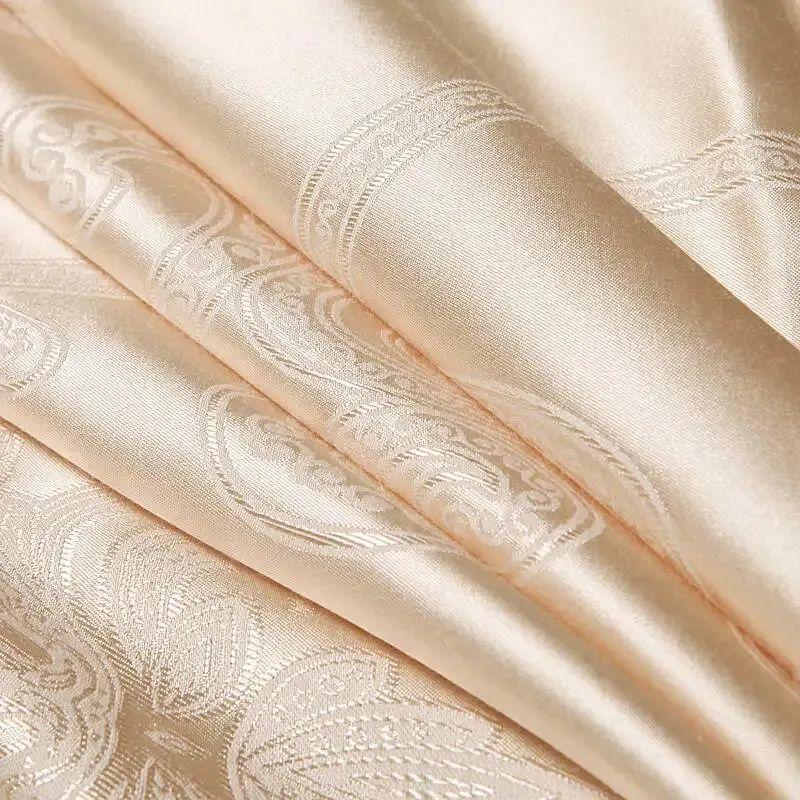
1. Basic concepts
Satin jacquard is a pattern that is woven directly into the fabric, giving it a concave-convex texture that looks like a watermark. It is based on satin fabric and is woven with small jacquard technology.
2. Production process
① The satin jacquard processing technology requires weaving first and then dyeing;
② Satin jacquard uses two or more different tissues, or uses yarns of different raw materials to create layers of surface patterns Feel and achieve design effects;
③ Fabric weaving The pattern is formed by changing the warp and weft structure, and the yarn count is fine, which requires extremely high requirements for the raw material cotton. And because the pattern needs to be woven directly into the cloth, the density of the cloth must reach a certain level to show the exquisite jacquard pattern. If the fabric of normal density is used, the woven pattern will not be clear.
3. Fabric characteristics
① The biggest advantage of jacquard fabric is that it is pure and natural in color, simple and fashionable;
② Satin jacquard is better than other materials, and the lighting effect in the bedroom is extremely obvious;
③ The product features retain the soft and unique texture of satin fabric, which is delicate and refreshing. Slippery, with better gloss and better hand feel;
④ Good drape and breathability, high color fastness (yarn dyeing);
⑤ The color and texture are more beautiful and pleasing to the eye than pure satin, showing more layers and changes;
⑥ The pattern cannot be washed away with water. No matter how many times it is washed, it will always remain as new and will not turn white or gray. ;
⑦ Suitable for various furniture, and It always makes people feel thick and warm.
4. Washing instructions
(1) Use neutral detergent, do not use bleach. The stronger the stain removal ability of the washing powder, the stronger the chemical, it will definitely To aggravate the color floating phenomenon, it is recommended to use laundry detergent for cleaning.
(2) The washing water temperature should not exceed 35 ℃, please do not soak, please set the washing machine program to gentle washing.
(3) Please drain and dry after washing Dry, can be ironed at medium temperature, do not expose to sunlight.
(4) Please fold neatly after drying Put it in the wardrobe and put in an appropriate amount of bagged camphor tablets.
(5) Dear friends who like cleanliness, such as It needs to be cleaned before use. Please use cold water and add some salt to clean it. You don’t need to add washing powder. This can wash away the slurry and printing and dyeing floating colors on the surface of the cotton fabric. It will be softer when used and the color will be firmer.
Satin fabric classification
Gongsun fabrics can be divided into four types: striped satin, plaid satin, satin jacquard and satin jacquard printed fabrics.
PART
01
Satin striped fabric (referred to as “satin strip”)
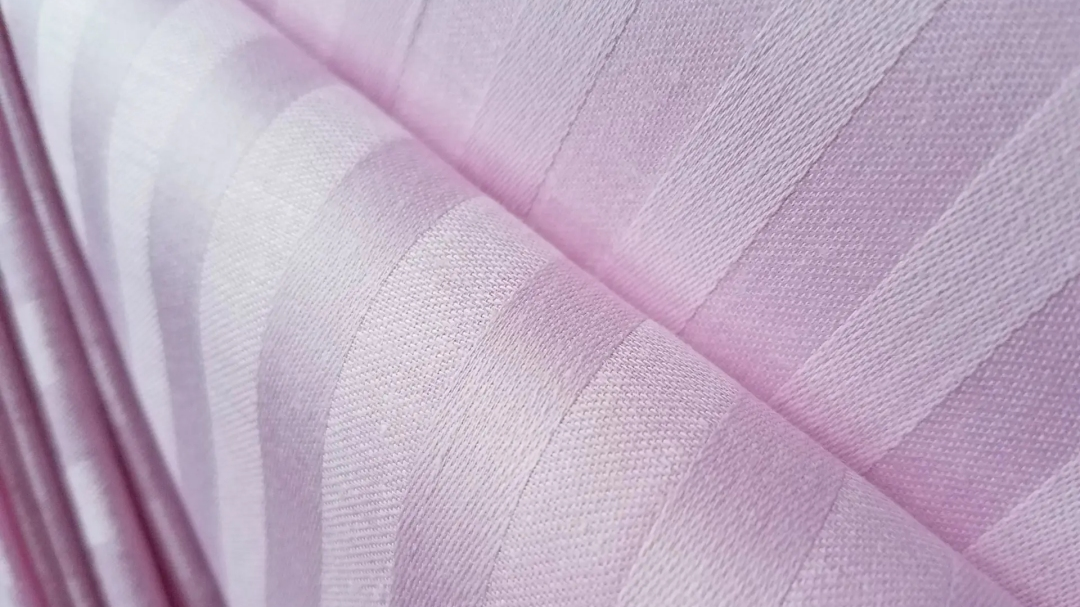
The texture is extended by horizontal strips, using the process of weaving first and then dyeing, and the fabric is generally solid color . Pure cotton fabrics will shrink slightly, will not pill, and will not fade easily.
PART
02
Satin plaid fabric (referred to as “satin” plaid)
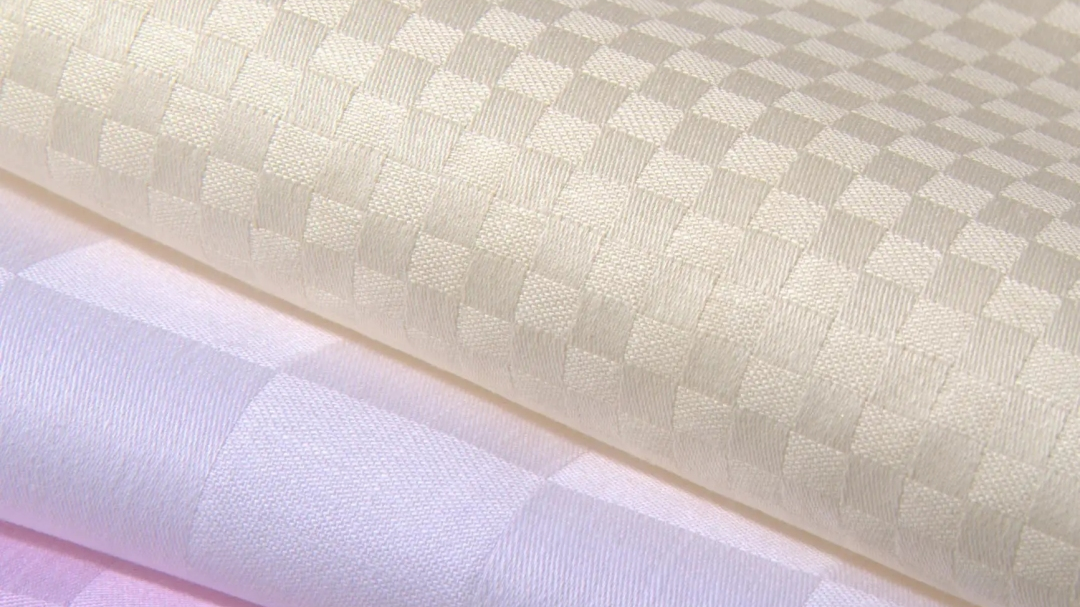
The pattern is a grid-like pattern of vertical and horizontal bars extending across each other. Using the first weaving and then dyeing process, the fabrics are generally solid colors. Pure cotton fabrics will shrink slightly, will not pill, and will not fade easily.
PART
03
Gongsatin jacquard fabric (referred to as “little jacquard”)
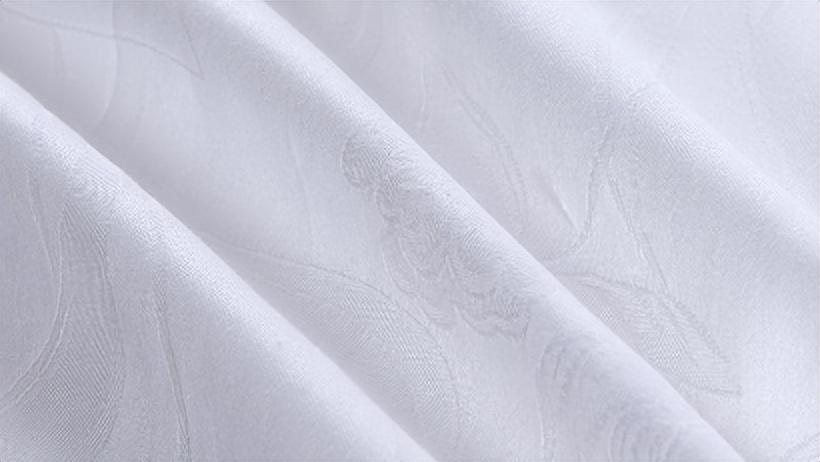
(English Satin
jacquard
The pattern on the fabric is not ordinary printing or embroidery, but woven with yarn. When weaving fabrics, the warp and weft structures are changed, and the warp and weft are intertwined and floated to form different patterns, forming patterns with fine yarn counts and high needle thread density. The fabric is generally very thin, not thick, and very soft and dense. It has high requirements for cotton and requires a finer yarn count, usually around 40s. In addition, the larger the count, the thinner, the smaller the count, the thicker, and the thicker the fabric will be. The thickness depends on the count of your fabric. Generally, the count of satin is around 40. The surface of the satin jacquard fabric, which is first weaved and then dyed, has a concave and convex surface, and beautiful patterns such as flowers, birds, fish, insects, birds and animals can be woven with warp/weft threads. The texture is soft, delicate and smooth, with a unique texture, good gloss, good drape and breathability, and high color fastness (yarn dyeing). The pattern of jacquard fabric is large and exquisite, and the colors are distinct and have a strong three-dimensional effect. It does not deform or fade when used, and feels good.
PART
04
Satin jacquard printed fabric (referred to as “jacquard”)
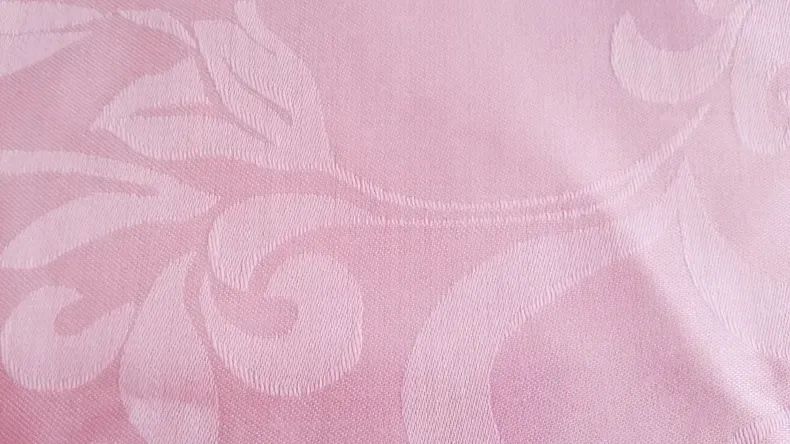
Gon satin jacquard printed fabric (English Exquisite
jacquard
Fabrics) is a thick fabric with a double or multi-layer complex structure, named for its pattern characteristics and uses. Jacquard is different from dobby. The main difference between the two is that the craftsmanship is different. For consumers, the difference is that jacquard can weave much richer patterns than dobby. The large jacquard fabric has a plump feel, thick texture, strong wear resistance, good breathability, comfortable sitting, and neither stuffy nor damp. The pattern has layers, and the concavity and convexity have a sense of standing. Therefore, compared with ordinary fabrics, jacquard fabrics are more comfortable, durable, have beautiful patterns, and are more suitable for home use.
tyle=”text-align: center;”>
(English Satin
jacquard
The pattern on the fabric is not ordinary printing or embroidery, but woven with yarn. When weaving fabrics, the warp and weft structures are changed, and the warp and weft are intertwined and floated to form different patterns, forming patterns with fine yarn counts and high needle thread density. The fabric is generally very thin, not thick, and very soft and dense. It has high requirements for cotton and requires a finer yarn count, usually around 40s. In addition, the larger the count, the thinner, the smaller the count, the thicker, and the thicker the fabric will be. The thickness depends on the count of your fabric. Generally, the count of satin is around 40. The surface of the satin jacquard fabric, which is first weaved and then dyed, has a concave and convex surface, and beautiful patterns such as flowers, birds, fish, insects, birds and animals can be woven with warp/weft threads. The texture is soft, delicate and smooth, with a unique texture, good gloss, good drape and breathability, and high color fastness (yarn dyeing). The pattern of jacquard fabric is large and exquisite, and the colors are distinct and have a strong three-dimensional effect. It does not deform or fade when used, and feels good.
PART
04
Satin jacquard printed fabric (referred to as “jacquard”)

Gon satin jacquard printed fabric (English Exquisite
jacquard
Fabrics) is a thick fabric with a double or multi-layer complex structure, named for its pattern characteristics and uses. Jacquard is different from dobby. The main difference between the two is that the craftsmanship is different. For consumers, the difference is that jacquard can weave much richer patterns than dobby. The large jacquard fabric has a plump feel, thick texture, strong wear resistance, good breathability, comfortable sitting, and neither stuffy nor damp. The pattern has layers, and the concavity and convexity have a sense of standing. Therefore, compared with ordinary fabrics, jacquard fabrics are more comfortable, durable, have beautiful patterns, and are more suitable for home use.







